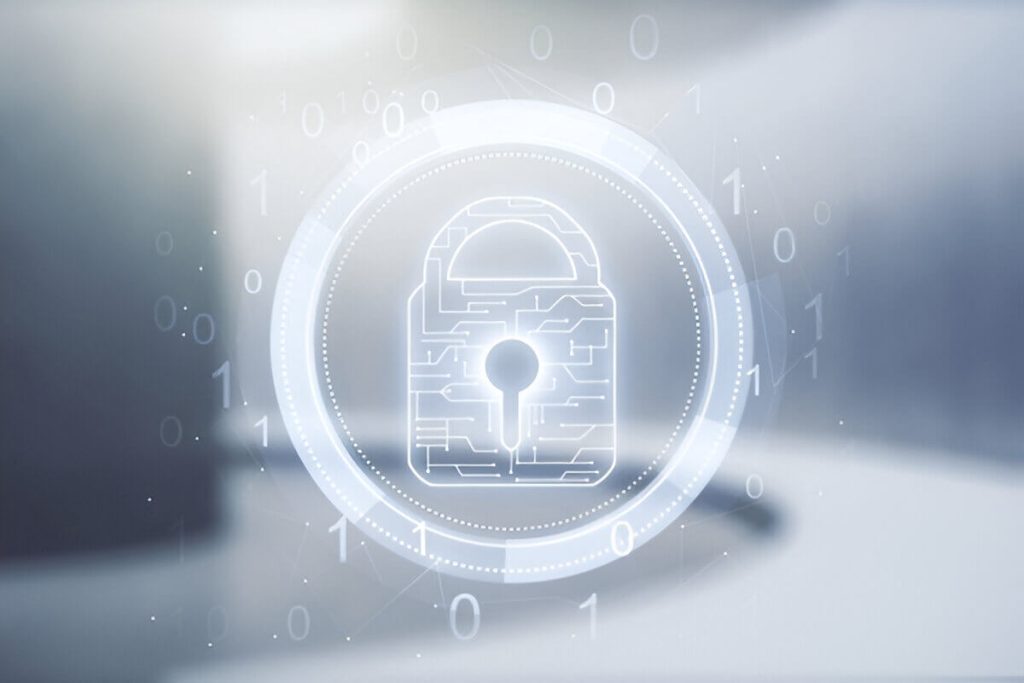
Understanding Controlled Unclassified Information (CUI) is crucial for government and private organizations today. This guide examines CUI Basic, essential for protecting sensitive information without full classification. It discusses its role in data protection, differences from other classifications, and the National Archives’ oversight. It also provides compliance best practices and highlights future trends in information security, helping you navigate the digital landscape confidently.
What is CUI Basic?
Controlled Unclassified Information (CUI) Basic is a category within the broader CUI program that deals with sensitive information requiring protection but not classified under national security standards. The concept of CUI Basic emerged as part of an effort to standardize how government agencies handle data that doesn’t meet the criteria for classified status yet still demands safeguarding due to its sensitive nature.
Defining CUI is crucial for ensuring consistent protection across various government sectors. It encompasses information that, if disclosed without proper authorization, could impact privacy, proprietary interests, or policy objectives. By establishing a uniform system for managing this type of data, the government aims to enhance transparency and security while facilitating better information sharing.
The classification of CUI Basic plays a vital role in maintaining the integrity and confidentiality of government data. It ensures that all federal agencies adhere to standardized procedures when handling controlled unclassified information, thereby reducing risks associated with mishandling or unauthorized access. Understanding what constitutes CUI Basic helps organizations comply with regulations and protect sensitive information effectively.
The Importance of CUI in Data Security

In today’s digital age, the importance of Controlled Unclassified Information (CUI) in data security cannot be overstated. As organizations handle vast amounts of data daily, ensuring the protection of sensitive information has become a top priority. CUI refers to information that requires safeguarding or dissemination controls pursuant to and consistent with applicable laws, regulations, and government-wide policies.
Understanding the importance of CUI is crucial for robust data protection strategies. By categorizing and controlling access to sensitive data, organizations can mitigate risks associated with unauthorized disclosure or loss. This not only helps in maintaining compliance with regulatory requirements but also fortifies overall information security frameworks.
Implementing effective measures for safeguarding sensitive information involves a comprehensive approach that includes encryption, access controls, and regular audits. By prioritizing the protection of CUI, businesses can enhance their resilience against cyber threats while fostering trust among clients and stakeholders who rely on them to protect their valuable data assets.
As cyber threats continue to evolve, the importance of diligently managing CUI becomes even more pronounced. Organizations must stay informed about best practices in information security to ensure they are adequately prepared to face potential challenges head-on.
CUI Categories and Examples
Controlled Unclassified Information (CUI) is a critical aspect of data management, especially for organizations dealing with sensitive information that requires protection but does not fall under classified status. Understanding the types of CUI and their categorization is essential for ensuring compliance and safeguarding data effectively.
The types of CUI can be broadly categorized into several groups, each pertaining to different areas of interest or sectors. These categories include:
- Privacy: This involves personal information that needs protection under privacy laws. Examples include Social Security numbers, medical records, and personal identification information.
- Proprietary Business Information: This includes trade secrets or confidential business data that could impact competitive standing if disclosed improperly.
- Law Enforcement: Information related to law enforcement operations such as investigation reports, witness statements, or any other sensitive materials used in legal proceedings fall under this category.
- Critical Infrastructure: Data related to systems and assets vital to national security, economic security, public health or safety are included here. For instance, details about power grids or water supply systems.
- Export Control: This encompasses information about defense articles and services regulated by export control laws.
To further illustrate these categories with examples of controlled unclassified information (CUI), consider the following scenarios:
- A healthcare provider managing patient records would need to classify these documents under the privacy category.
- A tech company’s proprietary software algorithms would be categorized as proprietary business information.
- Police departments handling case files must categorize them under law enforcement CUI.
- Utility companies overseeing grid operations would classify certain operational details as critical infrastructure CUI.
Data categorization under CUI ensures that organizations handle sensitive information appropriately while maintaining transparency with stakeholders about their data protection practices. By understanding these categories and examples, businesses can better navigate compliance requirements and protect their valuable data assets effectively.
How is CUI Basic Different from Other Data Classifications?
When it comes to understanding data classification, it’s essential to differentiate between Controlled Unclassified Information (CUI) and other types of data classifications such as classified information. The distinction lies in the level of sensitivity and the handling requirements associated with each type.
CUI refers to information that requires safeguarding or dissemination controls pursuant to and consistent with applicable laws, regulations, and government-wide policies but is not classified under Executive Order 13526 or the Atomic Energy Act. In contrast, classified information is designated as sensitive for national security reasons and is subject to strict handling protocols.
A common point of confusion arises when comparing unclassified vs controlled unclassified info. Unclassified information does not require any special protection or controls beyond standard privacy measures. However, CUI demands specific safeguarding measures due to its potential impact on governmental interests if mishandled.
Data classification systems comparison further highlights these differences by outlining how each type of information should be treated based on its sensitivity level. While classified information requires rigorous protection due to its potential impact on national security, CUI is managed through a tailored approach that balances accessibility with necessary controls.
In summary, understanding cui vs classified information helps organizations implement appropriate security measures while ensuring compliance with regulatory requirements. By recognizing the nuances between unclassified vs controlled unclassified info, entities can better protect sensitive data without impeding operational efficiency.
The Role of the National Archives in Managing CUI
The National Archives and Records Administration (NARA) plays a pivotal role in managing Controlled Unclassified Information (CUI) within the realm of government data. As the authoritative body responsible for overseeing federal records, NARA’s involvement in CUI oversight ensures that sensitive information is handled with the utmost care and precision.
NARA’s role in managing government data, particularly CUI, involves setting standards and guidelines to protect information that, while not classified, still requires safeguarding due to its sensitivity. This includes ensuring compliance with federal policies and providing training and resources to various agencies to help them effectively manage their CUI responsibilities.
By establishing comprehensive frameworks for handling such information, NARA aids in maintaining the integrity and confidentiality of government data. Through its diligent oversight, NARA not only supports transparency but also upholds national security interests by preventing unauthorized access to critical information. In essence, NARA’s stewardship is crucial for fostering a culture of accountability and protection across all levels of government data management.
Implementing CUI Compliance
Implementing CUI compliance is a critical task for organizations that handle Controlled Unclassified Information (CUI). Adhering to CUI compliance guidelines ensures that sensitive data is protected against unauthorized access and potential breaches. To effectively implement these guidelines, organizations should adopt several best practices for data handling.
Firstly, it is essential to conduct a comprehensive assessment of the current data management processes. This involves identifying all instances of CUI within the organization and understanding how this information flows through various systems. By mapping out data pathways, organizations can pinpoint vulnerabilities and areas requiring enhanced protection measures.
Next, developing a robust security policy tailored to protecting controlled unclassified info is crucial. This policy should outline clear procedures for accessing, sharing, and storing CUI. It should also include protocols for incident response in case of any security breaches or leaks.
Training employees on the importance of CUI compliance cannot be overstated. Regular training sessions ensure that staff members are aware of their roles in safeguarding sensitive information and understand the consequences of non-compliance. Implementing a culture of security awareness within the organization fosters vigilance among employees when handling CUI.
Additionally, leveraging technology solutions such as encryption tools and access controls can significantly enhance data protection efforts. These tools help ensure that only authorized personnel have access to controlled information while maintaining an audit trail for accountability purposes.
Continuous monitoring and auditing play a vital role in maintaining ongoing compliance with CUI guidelines. Regular audits help identify any lapses or weaknesses in current practices, allowing organizations to make necessary adjustments promptly.
The Future of CUI
As we look toward 2024, the landscape of Controlled Unclassified Information (CUI) is poised for significant transformation, driven by technological advancements and evolving regulatory frameworks. One of the key CUI developments in 2024 will be the integration of more sophisticated data management systems that leverage artificial intelligence and machine learning to enhance information classification, storage, and retrieval processes. These technologies promise to streamline operations while maintaining stringent security protocols.
Another critical trend involves future trends in data security regulations. As cyber threats become increasingly sophisticated, regulatory bodies are expected to implement more robust guidelines to safeguard sensitive information. This means organizations handling CUI will need to stay ahead by adopting cutting-edge security measures that comply with these evolving standards.
Moreover, the evolving nature of controlled unclassified info requires organizations to adapt their strategies continuously. With a growing emphasis on transparency and accountability, companies must ensure that their CUI management practices are not only compliant but also agile enough to respond swiftly to changes in regulations or threat landscapes.
Staying informed about these trends and developments is crucial for any organization dealing with CUI. By proactively adapting to new technologies and regulatory demands, businesses can ensure they remain secure while efficiently managing controlled unclassified information in an ever-changing environment.
Why Understanding CUI Basic is Essential for Modern Data Management
Understanding Controlled Unclassified Information (CUI) Basic is becoming increasingly crucial for modern data management. In today’s digital landscape, where data breaches and unauthorized access are rampant, safeguarding sensitive information is paramount. CUI Basic serves as a framework that helps organizations identify, mark, and protect unclassified information that requires safeguarding or dissemination controls pursuant to law, regulations, or government-wide policies.
By comprehensively understanding CUI Basic, organizations can ensure compliance with federal guidelines and reduce the risk of data leaks. This not only protects sensitive information but also builds trust with clients and partners who expect rigorous data protection measures. Furthermore, implementing CUI protocols can streamline data management processes by clearly categorizing information based on its sensitivity level.
Incorporating CUI Basic into your organization’s data management strategy is not just about compliance; it’s about fostering a culture of security awareness and responsibility among employees. As we move further into an era dominated by digital interactions and transactions, mastering the nuances of CUI Basic will be indispensable for any organization aiming to maintain robust security standards while managing their data efficiently.